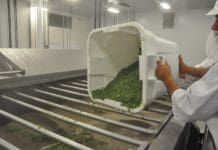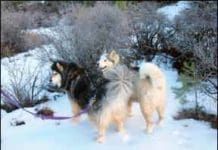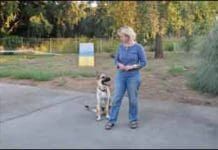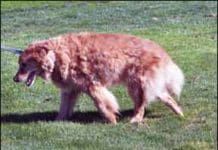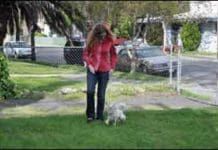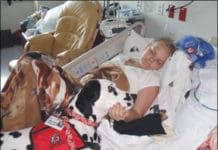Home Search
allergies/feed/rss2/Rawhide%20chews%20are%20potentially%20dangerous%20because%20they%20can%20be%20a%20choking%20hazard%20or%20cause%20gastrointestinal%20obstructions%20if%20your%20dog%20manages%20to%20chew%20off%20a%20piece%20that%20is%20small%20enough%20to%20swallow,%20but%20too%20large%20to%20pass%20unimpeded.%20In%20addition,%20some%20rawhide%20chews%20are%20hard%20enough%20to%20break%20or%20damage%20teeth. - search results
If you're not happy with the results, please do another search
Dog Training Questions Answered by the Experts!
I love the Whole Dog Journal and have implemented many of your positive dog training techniques and suggestions with our dog, Izzy. I hope that you may be able to further help us with her issue. Izzy is a wonderful 31/2-year-old Australian Shepherd/Border Collie-mix. She’s super smart and well-trained, with lots of energy and a constant need for learning and exercise. In the last couple years, however, her canine aggression has gotten to be a problem (I’m guessing it’s a protective instinct). She barks (like a yell) and confronts people in a number of situations.
Hazards of Hypoglycemia (Low Blood Sugar)
Hypoglycemia is a serious risk factor in diabetes management. Recent studies suggest that approximately 10 percent of diabetic dogs experienced hypoglycemic episodes that required hospitalization. One large survey found that the majority of diabetic dogs presented for hypoglycemia were receiving high doses of insulin (0.7 units or more per pound of body weight).
How to Set Up a Pet Trust to Ensure Your Dog is Cared For...
and build alternatives into the plan in case some aspects of your ideal scenario are not feasible for your pet's caretaker.üThe single owner of two dogs with significant behavioral issues (both exceedingly shy Shar-pei)
The Four Principles of Operant Conditioning for Dogs
The dog's behavior makes something good happen. Positive
An Inside Look at How Canned Dog Food is Made
I've always wondered how wet dog food gets made but it took a long time to find out. It seems like it's more difficult for a journalist to get into a pet food cannery than into a factory that builds spy planes. So when Whole Dog Journal is asked to take a tour of a dog food manufacturing plant we jump at the opportunity. This article details how canned dog food is made at one plant. From the initial ingredient preparations, to the canning and cooking process and the QC and testing procedures along the way, this article captures it all. Included in this web-only feature are detailed photos taken by Whole Dog Journal during the plant tour. Be sure to click on each image to enlarge it.
Complementary Care for Dogs with Cushing’s Disease
Because the diagnosis and treatment of Cushing's disease can be confusing, expensive, and fraught with adverse side effects, many caregivers turn to alternative or complementary therapies. For those who prefer treatments that have been proven in double-blind, placebo-controlled clinical trials, unconventional therapies are themselves fraught with peril. Product testimonials and anecdotal reports don't prove anything, and by turning first to an herbal preparation or glandular extract, one might deny the patient an opportunity for effective treatment.
Building Up Your Dog’s Confidence
graceful exit!üThe "get behind" game establishes you as a human safety shield for your dog. It's good to use when you are unable to escape the proximity of something that might otherwise scare your dog. (Thanks to Sarah Richardson
5 Things To Do When You Find A Stray Dog
I don't know a single dog owner who hasn't, at some point (or quite frequently), spent an inordinate amount of time trying to capture a stray or lost dog. I know I've caught more than my share in the small town, or its rural surroundings, where I've lived for the past five years. I've caught burr-covered, obviously lost hunting dogs; dogs whose injuries suggested they'd tumbled from the back of a truck; as well as some fluffy little lap-escapees who looked like they were just out for an adventure.
Some Heartworm Preventative Medications Have Become Less Effective
As we reported in Whole Dog Journal in March 2011, there is now ample evidence that at least one strain of heartworms has developed resistance to some of the market's best-known preventives. In addition, there is evidence to suggest that one of the most popular heartworm preventives, Heartgard, has an efficacy rate of less than 100 percent. The U.S. Food and Drug Administration's Center for Veterinary Medicine has sent at least one warning letter to Merial, the maker of Heartgard, asking the company to stop claiming 100 percent effectiveness for heartworm prevention. Given these developments, what should responsible dog owners do differently to better protect their dogs? The answer depends a bit on where you live and what you've already been doing to prevent heartworm infection.
How to Train Hearing Impaired Dogs Using Hand Signals and Simple Gestures
I was recently contacted by a friend about a darling Border Collie puppy whose photo she found on Petfinder.com – and who was deaf. This friend is crazy about Border Collies, and also knows that I have a deaf Chinese Crested. Thus, she thought of me when she saw this puppy. The person who was fostering the pup was unable to keep her much longer, and did not want to send her to the local shelter as that would almost certainly result in the puppy’s euthanasia. Why? Because that shelter considers all deaf dogs as “unadoptable.”
Training Police Dogs and Military Dogs Using Positive Methods
both for law enforcement and civilian trainers.üStaff Sgt. William Riney uses a toy and a game of tug to reward his military dog for detecting narcotics around vehicles on the grounds of Lackland Air Force Base
An Update on “Low Uric Acid” Dalmatians
A few months ago, I wrote about the British Kennel Club’s registration of two special Dalmatians over the objections of the breed clubs there (Whole Dog Journal June 2010). These two dogs were the result of a breeding project begun in 1973, in which a single outcross to a Pointer was made in order to reintroduce the normal gene for uric acid back into the Dalmatian bloodline.




